Talking Turkey
POSTED ON 28/02/2011‘Discover the roots’ was the suitably punning catchphrase for the first Wines of Turkey conference that took place at Vinopolis in London on Thursday. With 7000 years of culture behind it, the question was: how far back do you want to go in time?
It was apposite in the sense that Turkey has genuine historical roots in wine, and yet inappropriate in the sense that however much it may lay claim to an ancient history and culture, the roots of the modern wine industry in Turkey are shallow to say the least.
Only 30 years ago Turkish wine was under government control with grapes being trucked from vineyards hundreds, even thousands, of kilometres away. There was no wine-drinking culture at the time, just beer and raki. So Kevin Gould who opened the conference reminded us.
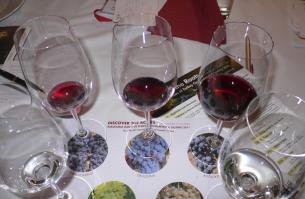 Turkish Delight
Turkish Delight
A friend of his had planted European cultivars in Gallipoli a few years ago and when it was ready for drinking, it was thought to be a very good New Zealand sauvignon blanc. Praise indeed. It’s only then in very recent times that the modern wine movement has sprouted. Perhaps it’s not that surprising.
The legacy of the Ottoman Empire lives on in a secular society that’s 99% muslim, and in which only recently, laws have been passed cracking down on alcohol advertising and raising the legal age for participating in events where alcohol is served to 24.
This was a slightly uncomfortable point raised by a man sitting next to me, and you could see the Turkish ambassador, H.E. Ahmet Unal Cevikoz , there to dignify the occasion with his diplomatic presence, shifting slightly uncomfortably in his seat as he wondered how many 18-30 holidays might have to raise the age bar.
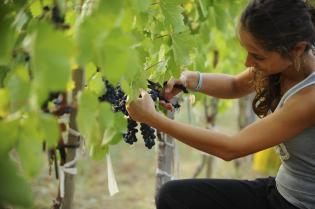 In the vineyards at Kayra ©Wines of Turkey
In the vineyards at Kayra ©Wines of Turkey
Indeed last year the Turkish Prime Minister Recep Tayyip Erdogan voiced his disapproval of alcohol consumption, saying that he couldn’t understand why people drank wine when they could just eat the grapes (http://www.bbc.co.uk/news/world-europe-12174905).
It was not thought polite to raise these issues at the conference, which clearly was more keen on concentrating on the positives of Turkish wine. Which are, since you ask? Well, I’ll come to the wines in a minute, but before I do, let’s talk a bit about the history because much of the morning was spent dwelling, if not in it, then on it at least.
Turkey has a lot of history. At the risk of starting a fresh middle Eastern conflagration involving Georgia, Armenia (viz: http://newsfeed.time.com/2011/01/11/archaeologists-unearth-the-worlds-ol...) and Lebanon, Patrick E. McGovern, ‘the Indiana Jones of Wine’, we were told, made out a case for The Taurus Mountains of eastern Turkey as the cradle of wine.
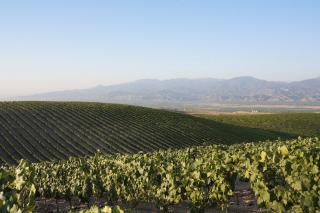 Kavaklidere ©Wines of Turkey
Kavaklidere ©Wines of Turkey
The intrepid professor had uncovered evidence in founder plants for the Neolithic period that the grapevine was first domesticated here. It really was Temple of Doom stuff, as we learnt that artefacts discovered in the region pointed to a wine culture emerging from 8000 BC and spreading over the millennia through Eastern Mediterranean towards Egypt and towards Persia.
All very well, I hear you say, but what about Lara Croft? Well, Lara was there as it happens, sitting between Kevin Gould and Indiana Jones in the form of Jancis Robinson. After the history, the Ottoman Empire and its temperance movement, here was Jancis Robinson to bring meaning to the modern-day period.
Responding to a tweet she had received earlier about vine leaves, she joked that Turkey could do more with a vine leaf than wrap little parcels of rice in them. Yes,
Turkey is an important grower of vines, she said, sixth in the world after France, Italy, USA, China, and Spain.
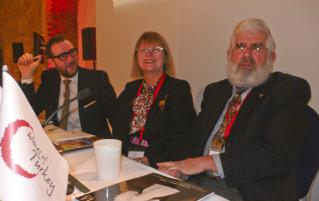 Kevin Gould, Lara Croft, Indiana Jones
Kevin Gould, Lara Croft, Indiana Jones
And while grape growing has been run as a separate activity from wine, increasingly companies are seeing the value of processing the grapes nearer vineyards and planting in cooler regions, particularly higher locations and those cooled by marine influence.
Along with the Big Three, Kayra, Doluca and Kavaklidere, there’s a rash of smaller boutique companies bringing attributes of ambition and international savoir faire to make increasingly interesting wines.
‘The big question in Turkish wine is the question of international versus indigenous varieties’, said Lara. Turkey does have some interesting and distinctive grape varieties, and while the Turks themselves are still fascinated by oaked chardonnay and cabernet sauvignon etc., the indigenous varieties are those that are of most interest to non-Turks.
Prospects for Turkish wine on export markets are very small, she went on, but since they are wines ‘with a story to tell’, she thought that Turkey could be the exception to the general rule that countries should avoid overplaying the history card in their marketing.
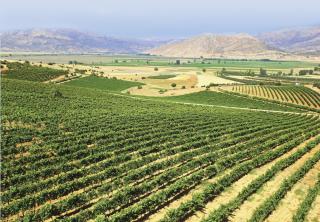 Likya ©Wines of Turkey
Likya ©Wines of Turkey
Dr. Gokhan Söylemezoglu gave us a rundown of Turkey’s 9 agricultural regions and 30 different sub-regions, telling us that of the 808 prime grape names, roughly 60 can be used for winemaking while in fact there are some 25 grapes commonly used. Grapes represent 2% of Turkey's agriculture and 23% of its fruit production, but only 2 – 3% of total grape production is used for winemaking. So now you know.
We then tasted examples of 5 main varieties:
Emir (“order” or “command”). Water white, clean fresh, citrusy, almost riesling-like with fresh appley fruit and a refreshingly juicy, citrusy aftertaste that's crisp and dry.
Narince (“delicate”). More colour, pleasantly clean, fresh and aromatic, with a light touch of spicy oak, nice juicy peachy, full-bodied fruit quality with good fresh acidity, well-crafted touch of oak.
Kalecik karasi (“black from Kelecik”). Smells vivid and fresh, like a gamay / pinot cross with cherryish aromas, pleasant red berry fruits, more tempranillo or gamay on the palate, nicely juicy and fresh, slightly dry on the finish and a touch peppery. Could almost be a youthful Spanish joven red.
Öküzgözu (“bull’s eye”). Good colour, quite strawberry and plummy and dark fruity, smooth, quite rich and fresh, tempranillo-like red fruits and slight dry finish.
Bogazkere (“burning throat”). Bright ruby. Sweet dark berry fruits aromas, very fruity with a naturally firm and extracted backbone and rustic tannins, almost petite sirah-like. Needs a good barbecue or grill to soften those tannins.
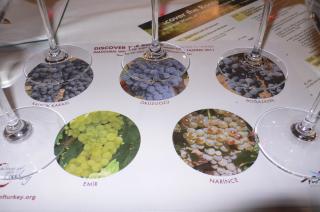 Variety is the spice....
Variety is the spice....
My Notes and Scores of Selected Turkish Wines from the Afternoon Tasting
There was nothing to set the pulse racing here. Winemaking was generally competent, but by and large the flavours and dimensions of most of the wines were simple with the fruit that was often more dilute than you would have hoped for. Whether complexity will come with greater vine age, planting in better locations or with a more in-depth understanding of the vineyard potential remains to be seen. A work-in-progress would be an apt summary.
2009 Doluca DLC Narince
Pale, pleasantly fresh, quite peachy fruit and nice citrusy acidity; well-made, refreshingly crisp dry white. 84
2009 Doluca DLC Narince Emir
Clean, fresh, quite neutral on the nose, nicely refreshingly juicy soft fruit with pleasant lemony finish. 84
2009 Doluca Serafin Sauvignon Blanc
From Canakkale in the Aegean region, this is fresh and delicately herbal on the palate with a pleasantly soft refreshing juiciness and dry finish, a tad short on varietal character for my liking but crisp enough to be refreshing. 83
2009 Doluca Antik White
A blend of narince, emir and semillon from Capadocia, this is quite mute but fresh, with some spritz on the palate and a nice appley bite on the finish. 85
2008 Doluca Karma Chardonnay Narince
From Denizili and Tokat, oak maturation brings a smokiness and a nuttiness to this well-crafted blend, which is just a little too heavily oaked for its own good, and while nicely buttery and rich, detracts a tad from the character of the grapes. 84
2009 Doluca Verano
A blend of cabernet sauvignon and Öküzgözu from Elazig and Anatolia, this is attractively salmon pink in colour, quiet on the nose but with nice zingy raspberry and strawberryish fruit on the palate, finishing clean refreshing and dry and a good foil for fish and salads. 84
2009 Doluca DLC Öküzgözu
From Alazig , this is vivid in colour, nicely juicy fresh damson plum fruit with mellow tannins and freshness to it, overall well-made with slight rustic dry tannins on the aftertaste and a tad one-dimensional. 84
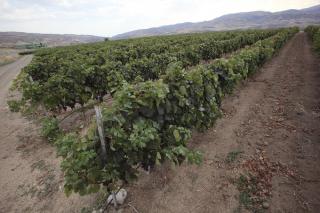 Vinkara ©Wines of Turkey
Vinkara ©Wines of Turkey
2008 Doluca KAV Tugra Bogazkere – Öküzgözu
Vivid colour, quite attracive aromatics and dark berry fruit richness here with a degree of concentration lacking in the straight Öküzgözu , a factor that gives this greater weight and length of flavour, and finishing with an attractively fresh damsony bite of acidity and tannin to it. 86
2008 Doluca Antik Shiraz Bogazkere
From Denizli (Aegean), this is cherryish on the nose with plenty of sweetly ripe cherry jam fruitiness tinged with spicy oak and well-managed smooth texture, finishing with a rustic twist of tannin. 85
2008 Doluca Karma Cabernet Sauvignon Öküzgözu
From Tekirdag (Marmara) and Alazig (Mid-eastern Anatolia), this is a well-contrived blend in which the blackcurrant sweetness of the cabernet rather dominates the native Öküzgözu , but it's an interesting blend with nicely crafted tannins and freshness; a wine with character. 86
Likya
2009 Likya Arykanda Sauvignon Blanc
From Elmah on the Mediterranean, this is clean and fresh with a gooseberryish sauvignon undertone and pleasantly fresh crisp fruit, albeit a little shy on the varietal side, but perfectly drinkable. 83
Likya Rose
Pale salmon, almost rioja-like on the nose, seemingly with a touch of spicy oak, this is quite attractivly ripe and juicy with very approachable berry fruit and nice clean dry finish. 83
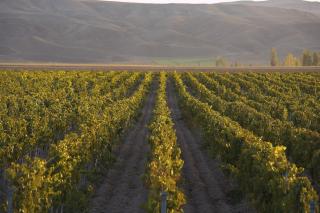 Kavaklidere ©Wines of Turkey
Kavaklidere ©Wines of Turkey
Kavaklidere
2009 Kavaklidere Ancyra Narince
From Tokat in middle eastern Anatolia, this is pleasantly clean and fresh on the nose with nicely textured ripe peachy fruit richness and good weight, finishing both juicy and dry; a well-crafted dry white. 85
2009 Kavaklidere Ancyra Muscat
Good correct grapey fresh muscat aromatics, attractively juicy and grapey fresh fruit, well-crafted with a nice touch of sweetness to it but with a refreshingly dry aftertaste. 85
2010 Kavaklidere Ancyra Öküzgözu
This is very nice fresh and cherryish on the nose, a sort of Turkish beaujolais and equally vivid and juicy on the palate, a good ripe cherry glugger with supple tannins and real approachability; very much what's not to like in its youthfully nubile form. 86
2008 Kavaklidere Prestige Öküzgözu
From Elazig in mid-eastern Anatolia, this is mellowing nicely in its aromatic profile with an almost Rioja-like smoke and vanilla oak character; the palate is plummy and ripe, the fruit attractively juicy and succulent, the finish nicely damsony and bitey and clearly needing food. 86
2009 Kavaklidere Vin-Art
A blend of kalecik karasi and syrah from Ankara and Denizli, this is well-made, ripe and rich with vivid dark berry fruits infused with spicy oak and firm rustic chunky monkey tannins that cry out for something suitably absorbent. 86
2008 Pendore Kavaklidere Bogazkere
Bright aromas, nice mellow cherryish fruit aroma and succulence; very approachably juicy and refreshing, an attractive red. 87
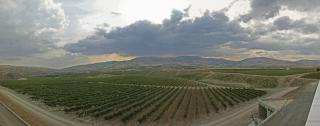 Vinkara ©Wines of Turkey
Vinkara ©Wines of Turkey
Selendi
2008 Selendi
A blend from Manis (Aegean) of cabernet sauvignon, shiraz, merlot and cabernet franc, so concentrating obviously on international rather than indigenous varieties, this is quite powerfully smoky oaky in aroma with lots of sweetly opulent blackcurrant / cassisy fruit and rustic tannin, well-produced but so smoky / oaky that it doesn't seem to have much in the way of local colour or character. 84
Sevilen
Sevilen Kalecik Karasi
From Dinizli, this smells of cherry jam and has an almost baked plum and prune character on the palate, almost grenache-like in its cherryish sweetness, finishing quite tannic and rustic, and feels more alcoholic than 13%. 83
Sevilen Centum
Made from Syrah at Denizli, this shows vivid, tarry syrah fruitiness on the nose and equally on the palate; a well-made red with attractively rich dark fruits vibrancy and a whisker of spicy oak to round out the tannins; nicely done. 86
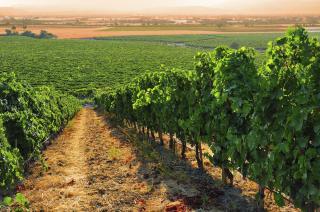 Sevilen ©Wines of Turkey
Sevilen ©Wines of Turkey
Kayra
2008 Kayra Bogazkere
From Denizli, this is attractively bright on the nose and richly concentrated on the palate with a whack of rioja-esque smoky oak bringing vanilla and coconutty flavours and just helping to round out some of those firm tannins, but finishes nice and fresh. 87
2008 Kayra Öküzgözu
From Elazig in mid-eastern Anatolia, this deep-coloured Öküzgözu is liquorice spicy on the nose with a fair whack of spicy liquoricey oak on the palate which is very ripe almost to the point of being baked , like the burnt top of a creamed rice pudding, with chunky, dry tannins on the aftertaste and the power of New World shiraz. 86
2004 Kayra Buzbag Rezerv
From Elazig and Diyarbakir in Anatolia, this blend of öküzgözu and bogazkere is mature and slightly leathery on the nose with an attractively youthful, mature and delicately gamey edge of cherryish fruit and mellow smooth tannins, and finishing nicely fresh despite its seven year old bottle age. 88
2005 Kayra Buzbag Rezerv
From Elazig and Diyarbakir in Anatolia, this blend of öküzgözu and bogazkere, is quite a bit younger in colour and on the nose than the nicely mature 2005, it's still strawberry cherryish and vigorous on the palate with juicy ripe tannins and attractively refreshing balancing acidity; drinking nicely now but with time to go. 88
2006 Kayra Buzbag Rezerv
Attractive nose a tad more marked by spicy oak than the two older vintages, still quite muscular and vigorously youthful in texture with nice plummy almost grenache-like sweet dark cherry fruitiness and good firm backbone; a wine for grills and barbecues. 87
Pammukale
2008 Pammukale Anfora Öküzgözu Bogazkere
Bright colour, quite earthy robust dark berry fruits and chunky tannins but attractive freshness and with the right food, this would make a pleasantly gluggy red. 84
2009 Pammukale Nodus Shiraz
From Denizli (Aegean), this is quite a attractively smoky and tarry shiraz, powerfullly opulent and New World in style, could almost be Barossa with its opulent blackberry and peppery fruit, sweet oak and firmish, chunky iron grip of tannins, but also has nice fresh spring in its step; very well-made. 87
2009 Pammukale Nodus Cabernet Sauvignon
From Denizli (Aegean), deep colour, nice ripe cabernet nose with a leafy hint of capsicum, good cassis-rich cabernet with spicy oak veneer, smooth rich backbone of tannin and good balancing acidity; very well-crafted red with a firm tannic backbone and smooth finish. Good cabernet. 88
Vinkara
2009 Vinkara Doruk Kalecik Karasi
From Ankara, this is pale with a sweet stewed rhubarby undertone on the nose, followed by similar characters on the palate, i.e. Sweet and juicy on the one hand, rhubarb and berry fruit fresh and almost crisp on the other; very gluggy. 86
2009 Vinkara Doruk Öküzgözu
From Ankara, this is deep coloured with a very ripe dark berry aroma, ripe dark berry fruits and a peppery undertone on the palate with nicely textured richness, fine tannins and good fresh acidity; overall well done and attractive. 87
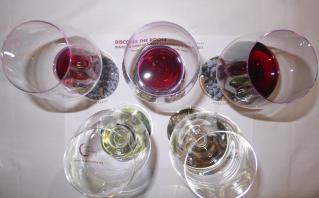 Discover The Roots
Discover The Roots

